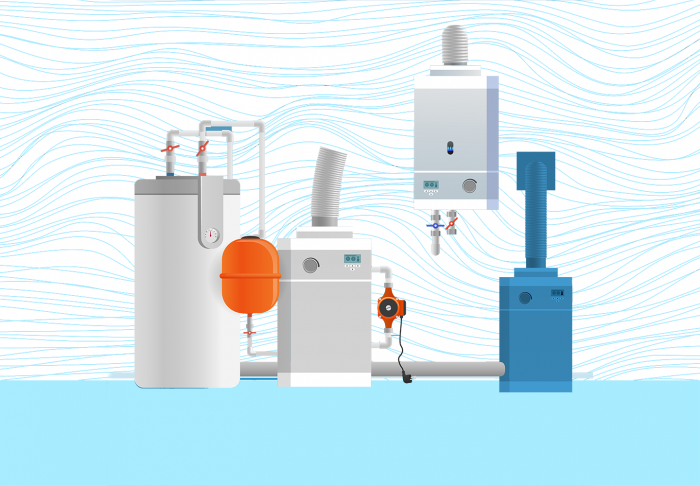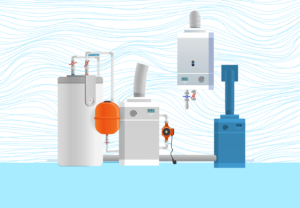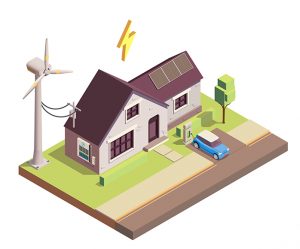Long gone are those times when big electric heaters were installed at a large space and can provide warm water to the whole house. With the advancement in technology, we now have electric tankless water heater that instantly heat the water but like all the invention it also has its limitation; space. Well, their comparison is a bit long discussion that we have already covered up in another article. In this article, we are going to focus on the selecting the right size of electric tankless water heater. What size tankless water heater do I need? To find out, you need to follow these simple steps:
Step 1. Select the number of fixtures:
Firstly, you need to decide the number of devices that this water heater will be connected to. For example, 2 sinks, 1 shower or 1 sink 1 kitchen faucet and a shower etc. Also you need to decide if these fixtures are placed locally or spread around the house because only a few tankless water heaters are capable of supplying hot water throughout the house. But you do need to select these numbers of fixtures sensibly and not make any changes after the purchase as it is unwise to save a few pennies by under-sizing the water heater.
Step 2. Calculate the flow rates:
The second step to this guide is to calculate the flow rate of the water heater by adding up the flow rates of all the fixtures you have selected in the previous step. Flow rate is the rate of liquid volume passing through a point in a unit time. Normally, we measure it gallons per minute also abbreviated as GPM. Let’s assume there are two sinks that you want to attach to this water heater each having a flow of 1.2 GPM. So they all add up to 2.40 GPM as there are two sinks. Similarly you can add the flow rates of other device that you have selected to attach let’s say a shower with flow rate of 1.6 GPM, hypothetically. Now you can add the flow rate of the shower to this 2.4 GPM and the answer comes out to be 4.0 GPM. Thus, an electric heater is supposed to supply 4 GPM as per this example.
The actual average flow rates of the fixtures are given in the table 1.
Table 1: Average flow rates of certain fixtures
| Fixtures | Flow rates |
| Bathroom sink | 0.5 – 1.5 GPM |
| Kitchen sink | 3.0 – 7.0 GPM |
| Shower | 1.0 – 2.0 GPM |
| Dishwasher | 1.0 – 2.5 GPM |
| Clothes washer | 1.5 – 3.0 GPM |
Step 3. Determine the required temperature rise:
To determine the required temperature rise, first you need to know about the temperature of water in your region because the water temperature varies with the environment. Then you need to determine the temperature at which you want your water to be. So, the required temperature rise is the difference between these two.
Required temperature= Desired Temperature – Water input
Let’s suppose the temperature of water in your region is 75°F and you want to heat it to 120°F. Then the required temperature rise would be 45°F. Thus, you need a water heater that will heat up the water to 45°F, as per this example.
Figure 1 tells the ground water temperature across the United States of America. You can see that the ground water temperature vary from 37°F to 72°F. So you better check up your region temperature of ground water before purchasing electric tankless water heater. In case you can’t find out, you can assume 50°F for these calculations.

Figure 1: ground water temperature across the USA
The water upon heating also varies with the kind of fixtures as shown in Table 2, although this temperature variation is too small and can be neglected.
Table 2: Average heated water in a certain fixture.
| Fixture | Average Heated Temperature |
| Tub | 102°F |
| Shower | 104°F |
| Washing Machine | 120°F |
| Dishwasher | 110°F |
| Kitchen faucet | 110°F |
In order to ensure the clarity of the concept, let’s use the above mentioned steps in this example.
Example:
You need to attach one kitchen faucet and a sink to electric tankless water heater and you have the ground water at the temperature of 42°F. So what are the desired flow rate and the temperature rise?
So the desired flow rate would be around 4 to 9 GPM as per the Table 1.
And the required temperature rise would be 62°F to 68°F as per the Table 2.
Thus, we need an electric tankless water heater having flow rate in the range of 4-9 GPM and temperature rise in 62°F-68°F.
Best Electric Tankless Water Heaters
Our guide to electric tankless water heaters can show you how they compare to gas tankless water heaters and help you choose the best tankless water heater for your needs.
Conclusion:
With these steps it is quite easy to choose what size tankless water heater you need for your home or business. And again, do not try to save a few bucks by settling in for a smaller tankless water heater. Because in the longer run it is not going to save any money when you will be draining out all the cold water in the wait of warm stream. Also if you push your water heater beyond its capacity it may break down and will require maintenance or even replacement.




